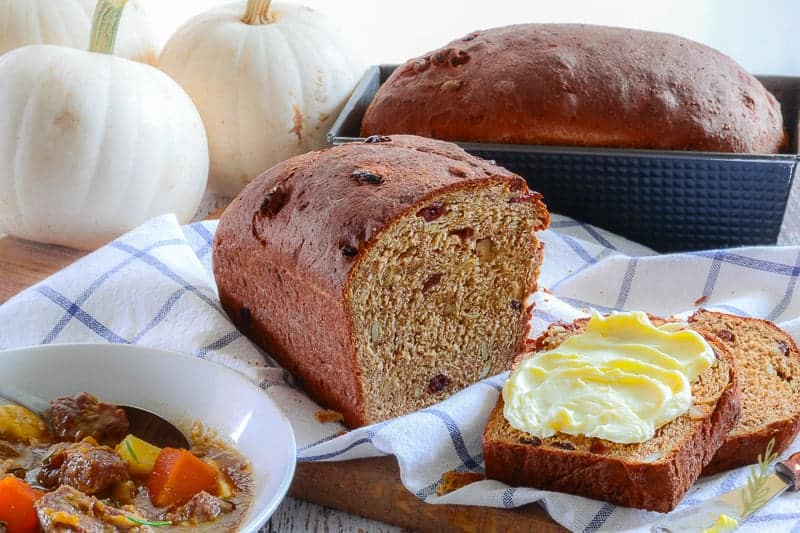 Truth be told, I don’t like it when my husband likes anything of anyone else’s better than he likes mine. I don’t care if it’s a car, a dress, or a meal. If he’s fawning over how amazing it is, I’m probably looking for the closest bat to bash it with. This is how so many of my recipes have come to fruition. He starts oohing and aahing over something and I’m all stank-face mad because it isn’t mine. So, I create a recipe that I feel is better to get him back on the right track. He’s probably pulling fast ones on me left and right, but, hey! It builds up my cooking game. He lingered over the last slice of a store-bought multigrain bread just recently, so I had to pull out the big guns and create this Fruit and Grain Pumpkin Bread to shut him down.
Truth be told, I don’t like it when my husband likes anything of anyone else’s better than he likes mine. I don’t care if it’s a car, a dress, or a meal. If he’s fawning over how amazing it is, I’m probably looking for the closest bat to bash it with. This is how so many of my recipes have come to fruition. He starts oohing and aahing over something and I’m all stank-face mad because it isn’t mine. So, I create a recipe that I feel is better to get him back on the right track. He’s probably pulling fast ones on me left and right, but, hey! It builds up my cooking game. He lingered over the last slice of a store-bought multigrain bread just recently, so I had to pull out the big guns and create this Fruit and Grain Pumpkin Bread to shut him down.
And shut him down I did.
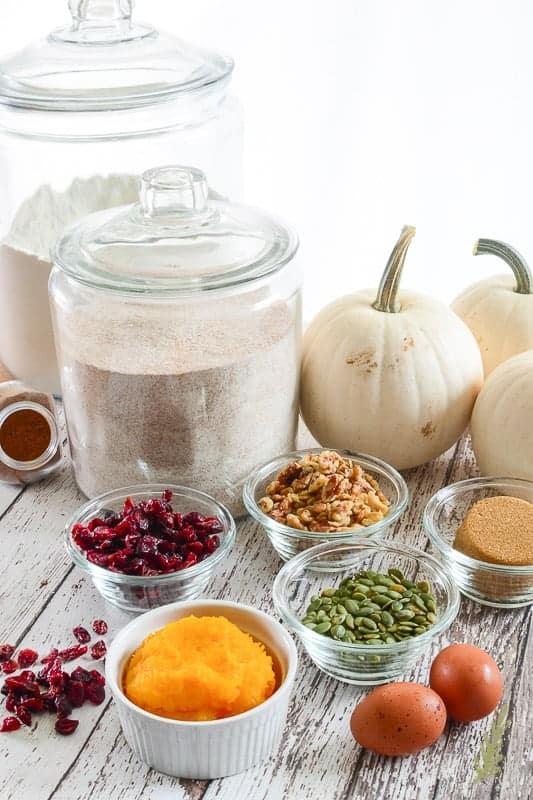
The man is well-fed, y’all. But, because he’s also a self-admitted glutton, any good cooking may make his belly stray. So, this is why recipes like fruit and grain breads become a household fixture.
This bread is a creation that developed after I went a little crazy buying pumpkins one fall. I came up with recipes like this Harvest Pork Stew and these Pumpkin Cheesecake Empanadas, yet I still had an obscene amount of pureed pumpkin leftover. It just so happened to coincide with the food-harlot’s breakup with his beloved multi-grain bread, so it inspired me to knock some sense back into him. While I love to use homemade pumpkin puree, canned pumpkin puree will work just as well. The walnuts I use are also interchangeable with pecans if that’s what you have on hand instead.
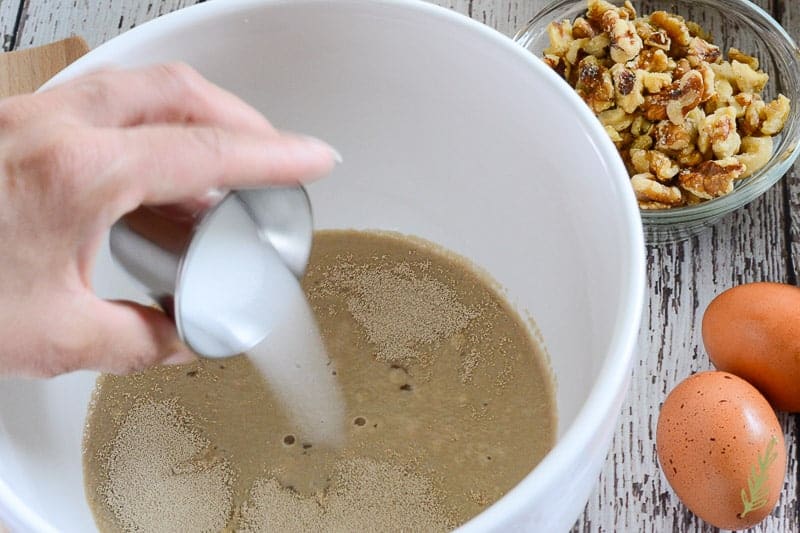
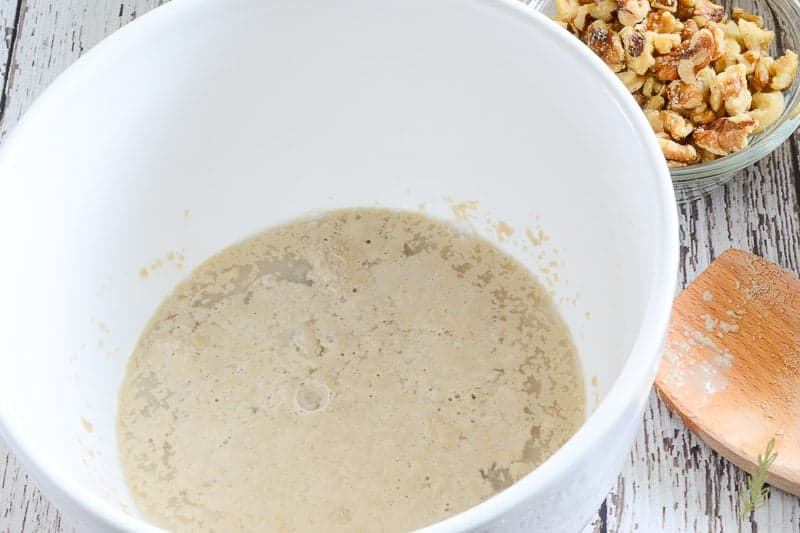
That is the amazing sign that there’s life in that thar bowl.
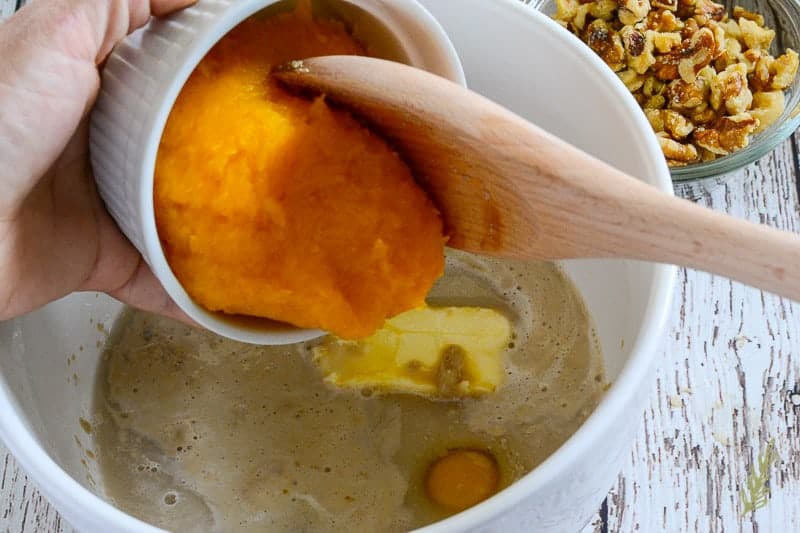
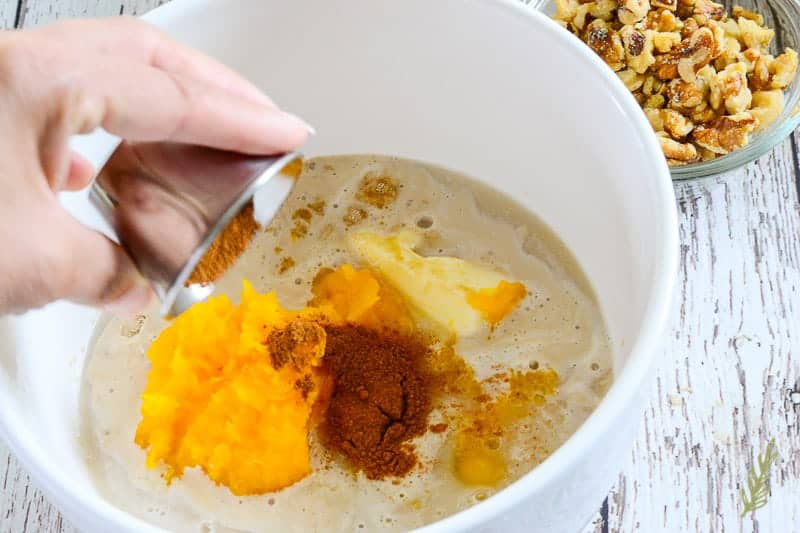
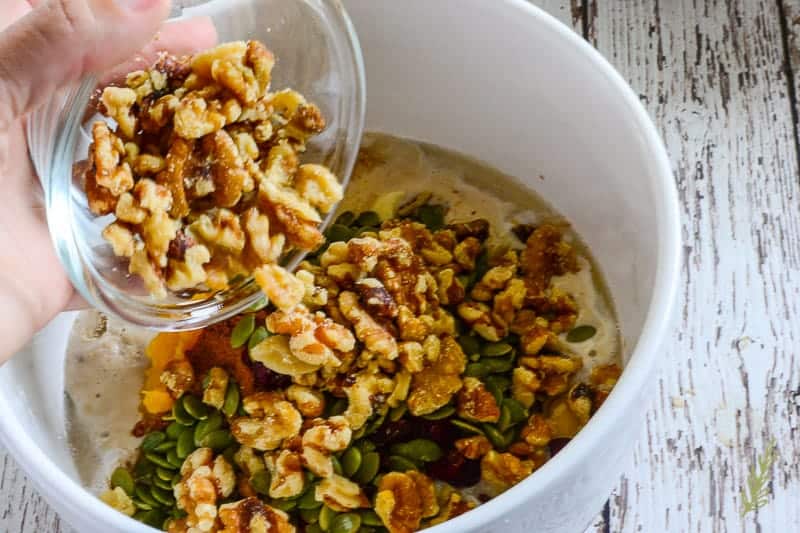
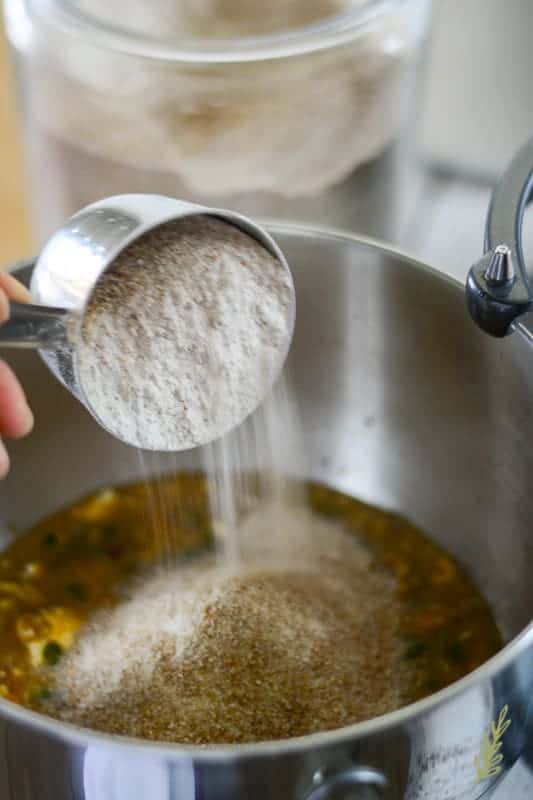
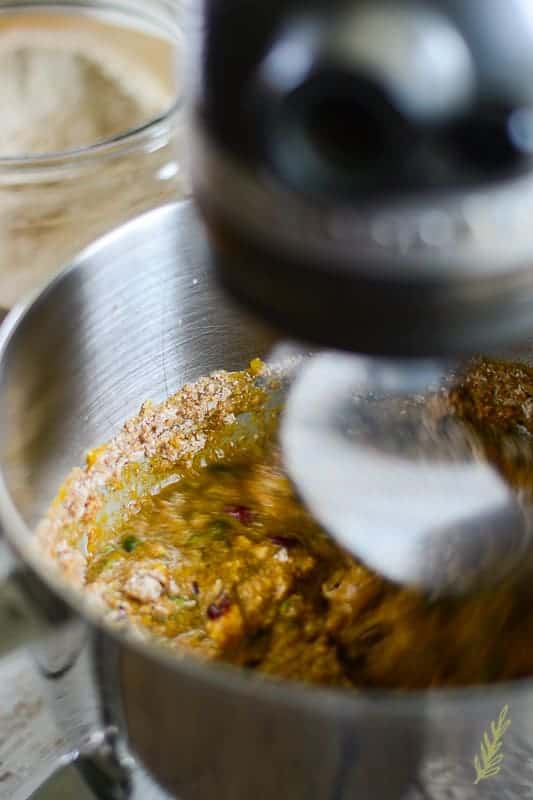

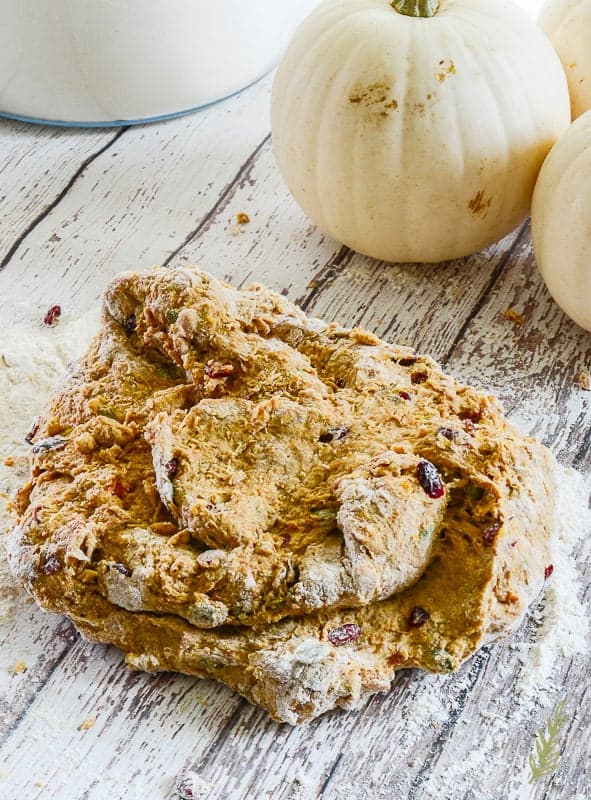
Place your ball of dough into your cleaned and lightly oiled mixing bowl (the one you mixed the gross batter in before). Turn the dough over so that the top surface is oiled. This classic move helps lubricate your dough’s surface and prevents a nasty, dry skin from forming on the dough. Cover the bowl with plastic wrap and a clean kitchen towel and place in a warm, draft-free environment. I like to use a cold oven with the oven light turn on, or my microwave for this.
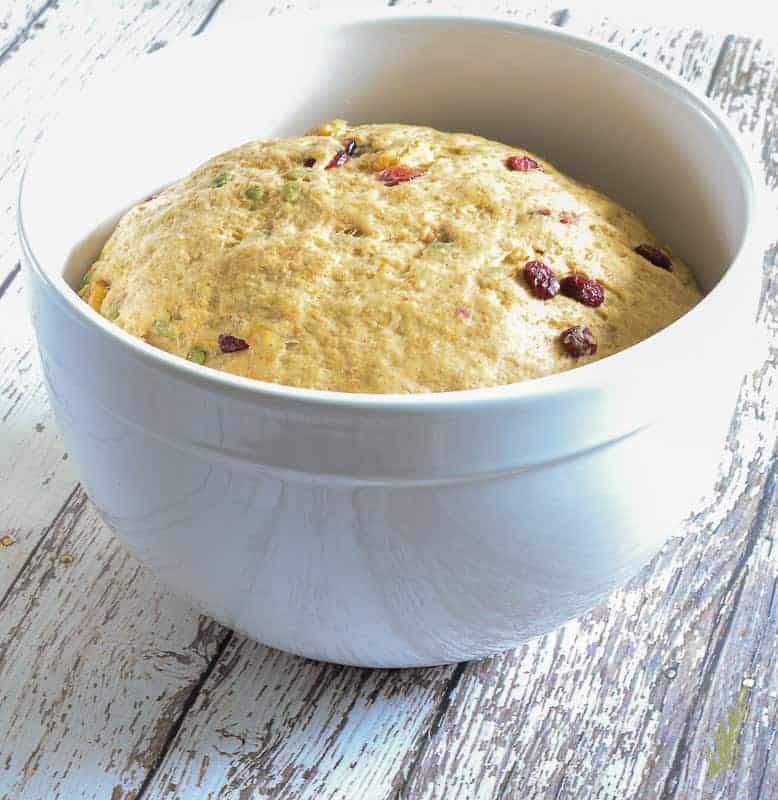
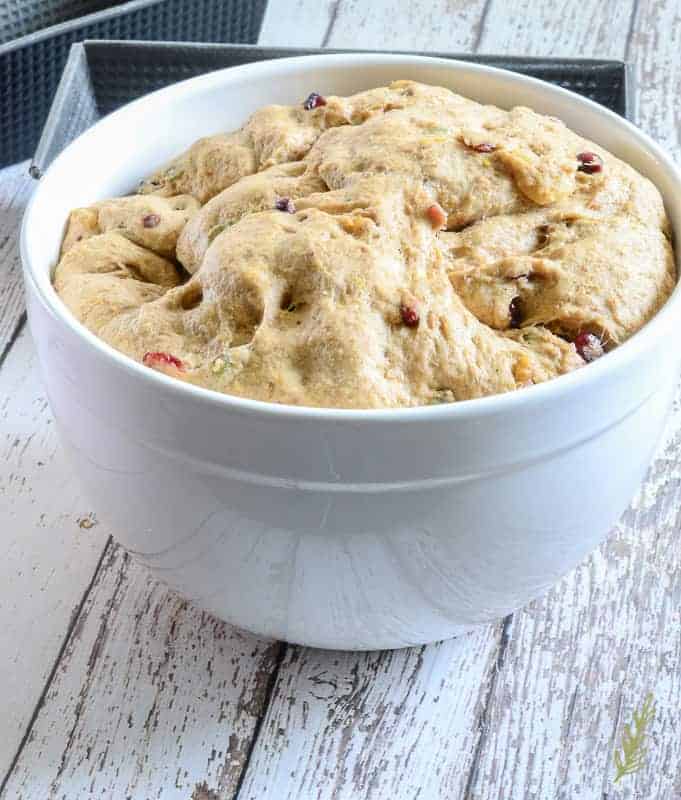
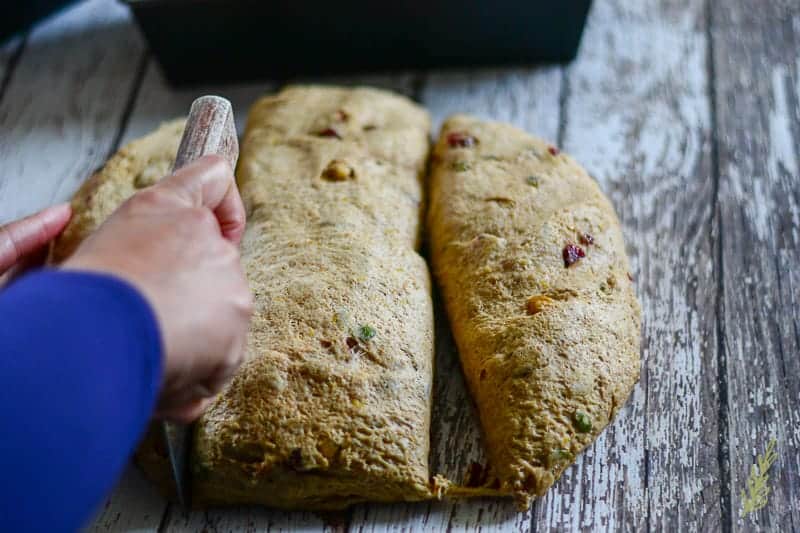
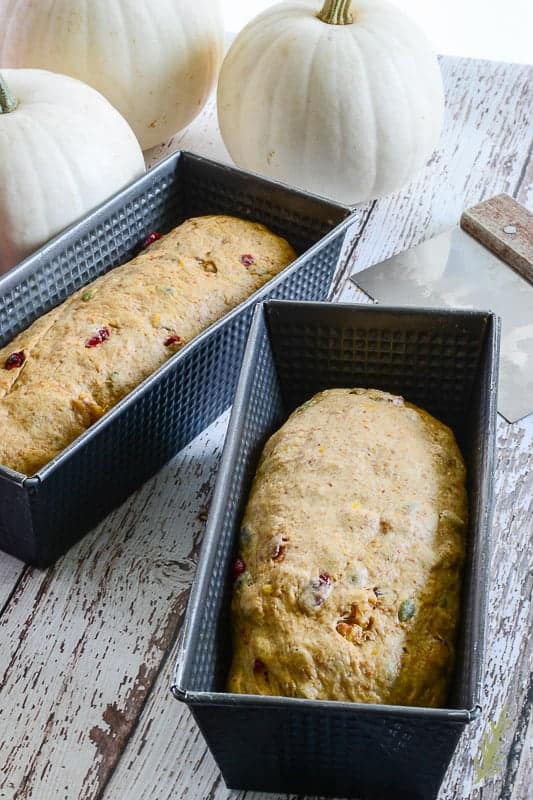
While the dough is rising for the final time, preheat your oven (not the one the bread is rising in, obviously) to 400°F.
Once the dough has finished its rise, place the pans into the hot oven and reduce the temperature to 350°F. The blast of the higher heat will help create a crisp crust by the end of baking. Bake for 30-35 minutes or until the loaves sound hollow when tapped, or they’ve taken on a deep brown color.
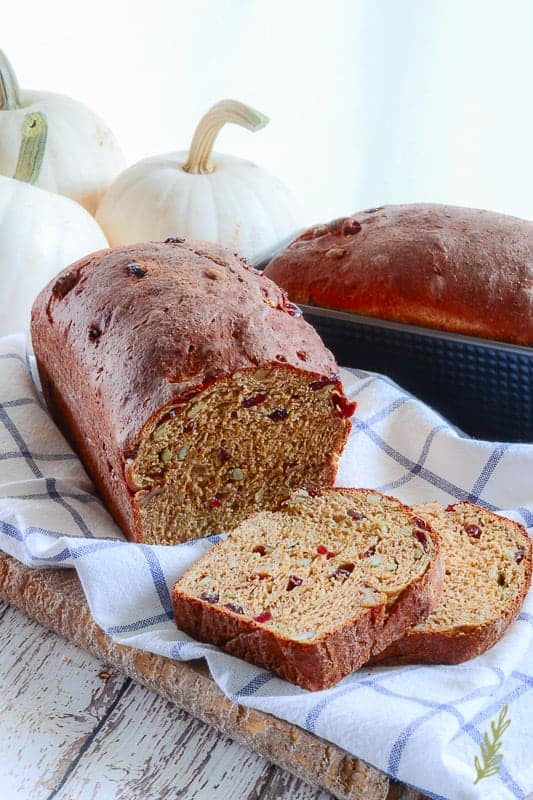
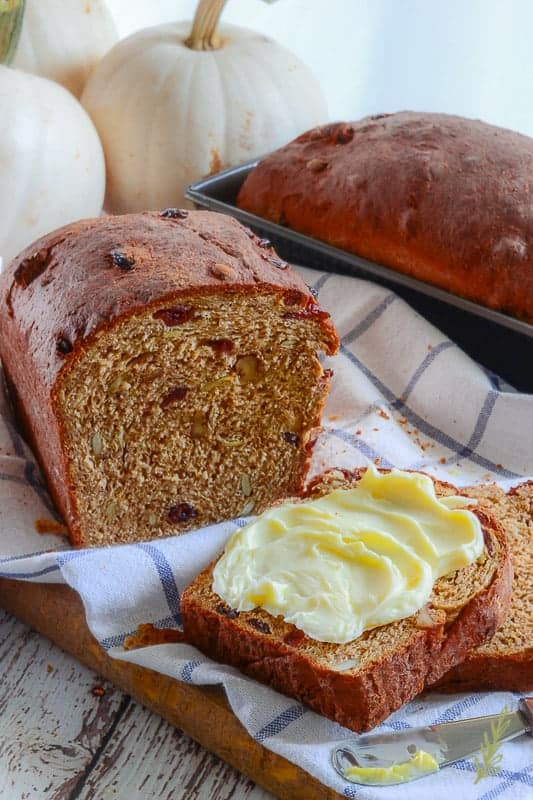
Pin this recipe for later, and share a loaf with a friend, or a jealous lover!

Fruit and Grain Pumpkin Bread
at Sense & EdibilityIngredients
- 2 tbsp active dry yeast
- 1 tbsp granulated sugar
- 1 1/2 cups warm water
- 1/2 stick unsalted butter softened
- 1/2 cup brown sugar packed
- 2 eggs
- 1 cup pumpkin puree
- 3 tsp pumpkin spice blend
- 1 cup dried cranberries
- 1/2 cup pumpkin seeds
- 1 cup chopped walnuts
- 2 cups whole wheat flour
- 1 tbsp kosher salt
- 4-4 1/2 cups all-purpose flour
Instructions
- In the bowl of a stand mixer, combine the yeast, sugar, and water. Allow the yeast to bloom for five minutes. If the mixture does not bubble and foam after five minutes, discard and begin again with fresh yeast.
- Add the butter, brown sugar, eggs, pumpkin, pumpkin spice blend, cranberries, seeds and walnuts to the mixing bowl. Blend the mixture together with the dough hook attachment of your stand mixer.
- Once the mixture is blended, add the whole wheat flour and salt. Mix to form a thick batter. Slowly add the all-purpose flour to the batter. Continue mixing, and adding the remaining flour, until the dough holds together and pulls away from the sides of the mixing bowl. The dough should feel pliable; too stiff or dry.
- Turn the dough onto a floured countertop and knead it for 4-5 minutes. Stop kneading; allow the dough to rest while you clean your bowl and oil it with a small amount (1 tsp) of vegetable oil. Continue kneading the dough for another 5 minutes or until the dough is smooth, elastic, and no longer sticky.
- Place the dough into the greased bowl and turn it over once to coat its surface with oil. Cover the bowl with plastic film and a clean kitchen towel and allow it to rise in a warm, draft-free area of the kitchen for 1-1 1/2 hours, or until doubled in bulk.
- Punch the dough down to expel the gases. If you prefer a dough with a finer crumb, allow the dough to rise a second time for an additional hour.
- Once the dough has finished its rise, punch it down a final time and divide the dough into two equal pieces. Shape the dough into loaves and put them into greased loaf pans. Allow the dough to rise one final time for 1 hour, or until the dough reaches the tops of the pans.
- While your loaves are rising, preheat your oven to 400°F. Place the loaf pans into the oven and reduce the heat to 350°F. Bake the loaves for 30-35 minutes, or until the loaves sound hollow when tapped.
- Allow the loaves to cool for five minutes before removing them from the pan and cooling until warm-they slice best when warm. You may also wrap the loaves in plastic film and freeze for up to two months before enjoying.
Notes
Try these other recipes that were created in a desperate attempt to regain my husband’s affections:



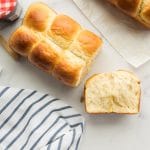
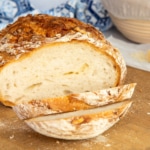
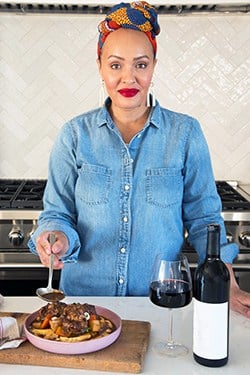
This loaf is everything I love about fall. Just perfect!
Thanks so much, Jazz!